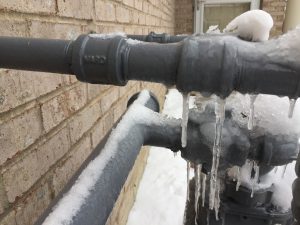Preventing Frozen Pipes in Winter: Expert Tips
Preventing Frozen Pipes in Winter: Expert Tips
Blog Article
What're your opinions about How to Prevent Your Pipes From Freezing?

Winter can ruin your pipes, specifically by freezing pipelines. Below's just how to stop it from occurring and what to do if it does.
Introduction
As temperature levels decrease, the danger of frozen pipelines increases, possibly bring about pricey repair services and water damage. Understanding just how to prevent icy pipes is crucial for home owners in cold environments.
Understanding Icy Pipelines
What triggers pipelines to freeze?
Pipelines ice up when exposed to temperature levels below 32 ° F (0 ° C) for expanded periods. As water inside the pipelines ices up, it expands, taxing the pipeline walls and potentially triggering them to burst.
Dangers and problems
Frozen pipelines can lead to supply of water disruptions, residential or commercial property damages, and expensive repair work. Ruptured pipelines can flooding homes and create extensive structural damage.
Indications of Frozen Water Lines
Identifying frozen pipes early can avoid them from rupturing.
Exactly how to identify frozen pipelines
Try to find lowered water flow from faucets, uncommon smells or noises from pipes, and noticeable frost on subjected pipelines.
Avoidance Tips
Insulating prone pipelines
Cover pipes in insulation sleeves or make use of heat tape to safeguard them from freezing temperature levels. Focus on pipes in unheated or exterior areas of the home.
Heating methods
Maintain interior spaces sufficiently heated, specifically locations with pipes. Open closet doors to permit warm air to circulate around pipes under sinks.
Safeguarding Outside Pipes
Garden pipes and exterior faucets
Separate and drain yard hose pipes before winter. Install frost-proof faucets or cover outside faucets with shielded caps.
What to Do If Your Pipes Freeze
Immediate activities to take
If you presume frozen pipelines, keep taps available to alleviate stress as the ice melts. Make use of a hairdryer or towels soaked in hot water to thaw pipes gradually.
Long-Term Solutions
Architectural modifications
Take into consideration rerouting pipelines far from outside wall surfaces or unheated areas. Include added insulation to attic rooms, basements, and crawl spaces.
Updating insulation
Purchase high-quality insulation for pipes, attics, and walls. Proper insulation helps preserve constant temperatures and minimizes the risk of frozen pipelines.
Conclusion
Protecting against frozen pipelines needs aggressive procedures and fast responses. By comprehending the reasons, indicators, and safety nets, home owners can shield their plumbing during winter.
6 Proven Ways to Prevent Frozen Pipes and Protect Your Home
Disconnect and Drain Garden Hoses
Before winter arrives, start by disconnecting your garden hoses and draining any remaining water. Close the shut-off valves that supply outdoor hose bibs and leave the outdoor faucet open to allow any residual water to drain. For extra protection, consider using faucet covers throughout the colder months. It’s also important to drain water from any sprinkler supply lines following the manufacturer’s directions.
Insulate Exposed Pipes
Insulating your pipes is an effective way to prevent freezing. Pipe insulation is readily available at home improvement stores and is relatively inexpensive. Pay close attention to pipes in unheated areas such as the attic, basement, crawl spaces, or garage. Apply foam insulation generously to create a buffer against the cold. You can also wrap your pipes in heat tape or thermostat-controlled heat cables for added warmth.
Seal Air Leaks
Inspect your home for any cracks or openings that could let in cold air. Seal any holes around the piping in interior or exterior walls, as well as the sill plates where your home rests on its foundation. Additionally, make sure to keep your garage door closed unless you’re entering or exiting. Leaving it open creates a significant air leak that can lead to frozen pipes.
Allow Warm Air Circulation
During cold snaps, it’s essential to allow warm air to circulate evenly throughout your home. Leave interior doors ajar to promote better airflow. Open kitchen and bathroom cabinets to help distribute heat consistently around the rooms. If you have small children or pets, be sure to remove any household chemicals or potentially harmful cleaners from open cabinets for safety.
Let Faucets Drip
A small trickle of water can make a big difference in preventing ice formation inside your pipes. When temperatures drop significantly, start a drip of water from all faucets served by exposed pipes. This continuous flow helps prevent the water from freezing. Additionally, running a few faucets slightly can relieve pressure inside the pipes, reducing the chances of a rupture if the water inside does freeze.
https://choateshvac.com/6-proven-ways-to-prevent-frozen-pipes-and-protect-your-home/

I was introduced to that editorial about Helpful Tips to Prevent Frozen Pipes this Winter through someone on another blog. Be sure to take the time to promote this article if you appreciated it. Bless you for being here. Return soon.
Call Today Report this page